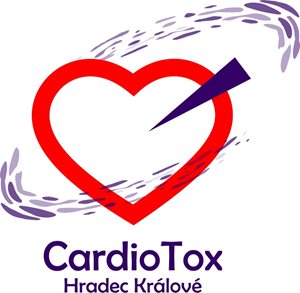 The results of the research teams (groups of Tomáš Šimůnek, Petra Štěrbová and Jaroslav Roh from the Faculty of Pharmacy in Hradec Králové and the group of Martin Štěrba from the Faculty of Medicine in Hradec Králové), that were joined in the former University research center UNCE CardioTox (2012-2017) have been published recently in four papers in leading international scientific journals.
The results of the research teams (groups of Tomáš Šimůnek, Petra Štěrbová and Jaroslav Roh from the Faculty of Pharmacy in Hradec Králové and the group of Martin Štěrba from the Faculty of Medicine in Hradec Králové), that were joined in the former University research center UNCE CardioTox (2012-2017) have been published recently in four papers in leading international scientific journals.
Anthracyclines are frequently used antineoplastic agents for treatment of various cancers. The therapy is nevertheless complicated by the risk of cardiotoxicity. The most life-threatening form of this side-effect is the chronic or late-onset cardiotoxicity which is manifested as dilated cardiomyopathy that may cause heart failure many months or even years after successful chemotherapy. Currently, the only pharmacotherapy approved as the primary prevention of anthracycline cardiotoxicity is dexrazoxane. Traditionally, its unique protective ability was ascribed to its iron-chelating metabolite ADR-925. Iron chelation with subsequent decrease of reactive oxygen species production is also cited in the official registration documents of dexrazoxane preparations, renowned textbooks of pharmacology, and many recent reviews.
The research of anthracycline cardiotoxicity that was established in Hradec Králové in the 1990s’ by prof. Vladimír Geršl and prof. Radomír Hrdina was originally based on this presumption and was focused on the development of iron chelators with better pharmaceutical features than has dexrazoxane, but after even stronger and more specific chelators of iron proved less effective, the research groups started to question the principal hypothesis. The principal role of ADR-925 in the protection was unequivocally disproved in two studies focusing on the biochemical pharmacology of ADR-925, which showed that contrary to former ground-setting reports, ADR-925 itself is well able to cross cellular membranes, but still lacks protective activity in the chronic model of anthracycline cardiotoxicity in rabbits (E. Jirkovský et al., Circulation-Heart Failure, 2021. IF = 8,790, AIS = 3,331, DAIS1). Moreover, in the latter paper, the interaction with the beta isoform of DNA topoisomerase II (TOP2) in cardiomyocytes was firmly established as the main difference in the intracellular effects of dexrazoxane and ADR-925. This led to the attempt to fully elucidate the structure-activity relationships in the bisdioxopiperazine group of compounds, which also comprises dexrazoxane. Formerly, the relationship was only partly described in cancer cells, but the TOP2 as the main mechanism of cardioprotection was (and still is) rather a controversial topic. The team used some previously described analogs and designed more than 30 new analogs and found a strong correlation with the cardioprotective activity of the compounds and their TOP2 catalytic inhibition and subsequent proteolytic degradation (A. Jirkovská et al., Journal of Medicinal Chemistry, 2021. IF = 7,446, AIS = 1,553, DAIS1). Importantly, a compound with the code-name ICRF-193 has been identified to have the highest cardioprotective activity. Due to the very low solubility of this compound, the pro-drugs with suitable pharmacokinetic characteristics had to be developed prior to in vivo study in rabbits (H. Bavlovič Piskáčková et al., Scientific Reports, 2021. IF = 4,379, AIS = 1,285, QAIS1). In the well-established model of chronic anthracycline cardiotoxicity, the pro-drugs of ICRF-193 indeed proved successful, as for a complete cardioprotection a 15-times lower dose of the compound with the code-name GK667 was needed in the comparison with the clinically approved dexrazoxane. The pro-drugs are now protected by the international patent application (WO2021/144746 A1) and the experimental data documenting their in vivo efficacy are published in Clinical Science journal (P. Kollárová-Brázdova et al., Clinical Science, 2021. IF = 6,124, AIS = 1,567, QAIS1)
The aforementioned works were recently supported by the Czech Science Foundation (21-16195S) and projects EFSA-CDN (CZ.02.1.01/0.0/0.0/16_019/0000841) and InoMed (CZ.02.1.01/0.0/0.0/18_069/0010046) co-founded by the ERDF.
Text: Asoc. Prof. PharmDr. Jaroslav Roh, Ph.D., Vice-Dean for Scientific Activity, Doctoral Studies and Technology Transfer